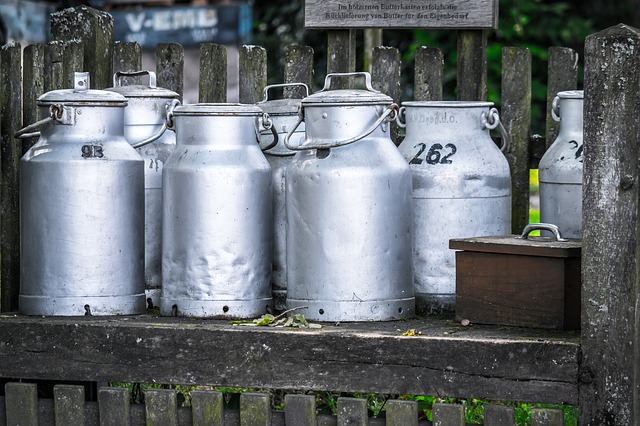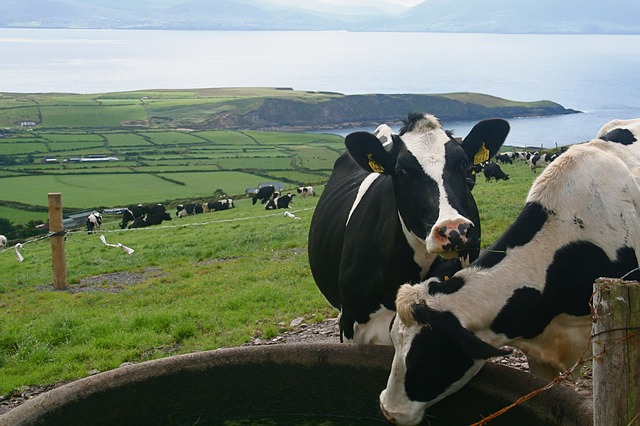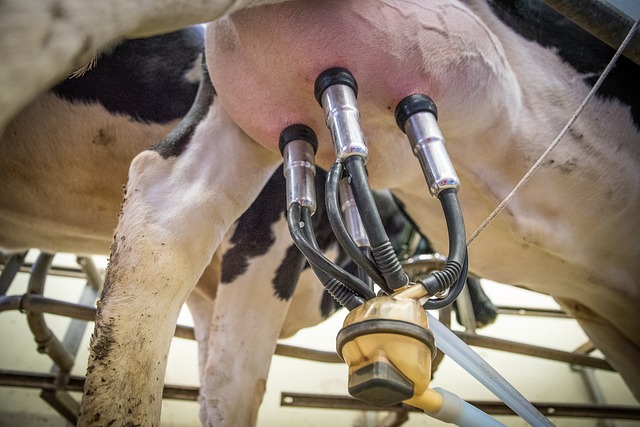According to Agrex Consulting, which every year conducts an analysis of the competitivity of the dairy cattle industry on an international scale on behalf of FranceAgriMer, global production is showing relatively stable growth of around 2% per year. In 2018, it reached 691 million tonnes, compared to 676 million in 2017 (+2.2%).

The United States came first with 97.7 million tonnes, followed by India (76 million tonnes), Brazil (35.5 million tonnes), Germany (32.7 million tonnes) and China (30.7 million tonnes). As for competitivity, the purpose of the study, it is measured using a battery of 40 indicators spread across seven areas: macroeconomic data, management of natural factors and the sustainability of resources, potential milk production, ability of the industry to organise itself, technological expertise in making the products, portfolio of end markets and ability of the operators to win over new markets. Analysis of each area makes it possible to identify the strengths and weaknesses of thirteen countries that the study has identified as the most competitive on the planet: Argentina, Australia, Brazil, the United States and New Zealand and eight European Union countries: Germany, Denmark, France, Ireland, Italy, the Netherlands, Poland and the United Kingdom.
Across these seven areas, France occupies first place on the podium in front of the Netherlands and New Zealand. But all the countries listed have one or more competitive advantages.
Competitive advantages
For example, for the first area, macro-economics, meaning the economic and agri-food environment, Argentina takes first place. It has benefited from the devaluation of its currency, which has boosted exports. Just behind Argentina, the dairy industry in New Zealand benefits from the strong overall contribution to the economy of the agri-food sector that rubs off on all areas of agriculture. After that comes Brazil, which benefits from its low production costs, especially labour, as well as its weak currency for exports.
 In the second area, sustainability of resources, it is Ireland that comes first. The country benefits from favourable natural conditions (abundant and regular rainfall), as well as good healthcare for its dairy herd. In general, the more liberal environment that has reigned since the abolition of milk quotas has encouraged the modernisation of dairy farms and investment in businesses. Like Ireland, Denmark, which is in second place, has abundant rainfall, but it is penalised by growing environmental concerns that hinder further development of cattle farming there.
In the second area, sustainability of resources, it is Ireland that comes first. The country benefits from favourable natural conditions (abundant and regular rainfall), as well as good healthcare for its dairy herd. In general, the more liberal environment that has reigned since the abolition of milk quotas has encouraged the modernisation of dairy farms and investment in businesses. Like Ireland, Denmark, which is in second place, has abundant rainfall, but it is penalised by growing environmental concerns that hinder further development of cattle farming there.
In area number three, meaning production potential, Ireland is once again in first place with strong growth in production over the past four years of 32.2%, followed by the Netherlands whose producers are the most competitive: they have the highest margins of any of the countries in the study. Brazil appears in third position, with its advantage of low production costs and extensive and abundant pastures. However, the industry here occupies last place in terms of milk quality, with low levels of fat and protein content.
Concerning area four, the industry’s ability to organise itself, New Zealand is streets ahead with its cooperative Fonterra, the second biggest company globally, which collects 80% of national production. It is such a success that dairy products represent over 40% of the country’s agri-food exports. France is also well placed in this area thanks to the strong international presence of its three flagship companies, Lactalis, Sodiaal and Eurial, all within the top 20 global collectors. The Netherlands is also well positioned. Its exports of dairy products represent 10.5% of the country’s agri-food exports, with the undisputed leader Friesland controlling almost 75% of collections in the country.
For area five, technological expertise, Italy is number one. According to the study, the diversity of its products gives it a decisive competitive advantage in export markets, especially for its cheeses (mozzarella, parmigiano reggiano and grana padano). France comes in second position, also thanks to the variety of its products.
For area six, namely the portfolio of end markets, New Zealand is clearly the dominant force due to its ability to compete in export markets. The country benefits from a broad diversity of customers (66 destinations) and a strong presence in emerging markets, particularly China. The Netherlands is second as it can also count on a great diversity of customers, as well as strong logistics and commercial abilities and, like New Zealand, growth in buoyant markets.
Finally, in area seven, the ability to win over new markets, France does very well. As is the case for other European Union countries, France benefits from the conclusion of a number of free trade agreements that should give it further opportunities in Canada and Japan, for example. It can also count on the great diversity of the international manufacturing sites of its leading companies (above all Lactalis) in growth markets. The same thing applies to New Zealand, which enjoys additional opportunities in the Asia Pacific countries with which it has signed a free trade agreement. Like the Netherlands, which is also growing in dynamic markets such as Nigeria in the infant milk powder sector.
France, a fragile leader

At the end of the day, France remains a leading producer of milk and has many assets: in 2018, it regained the first place that it had lost the previous year to the Netherlands. Among its clearly identified strengths are the production of and demand for very diverse and high quality dairy products, an excellent brand image, an internationally acknowledged capacity for research, a good health environment, a broad range of global customers and manufacturers with a strong international presence, especially in the more buoyant markets.
However, as noted by the authors, these competitive advantages are less and less decisive against a backdrop of increased competition internationally. As demonstrated, for example, by the drop in foreign trade for dairy products in 2018, following a slowdown in exports. Other causes for concern: the trend towards lower production volumes and higher production costs (above all labour) that adversely affect the farmers’ margins and therefore the outlook for growth.
The Netherlands, which came first in 2017, slipped back into second place. In fact, 2018 saw a drop in its production for the second consecutive year since 2016. The country is increasingly faced with the rising importance of environmental issues, particularly the management of effluent from farms and the application of fertilisers in fields, which hinder production. Nevertheless, the Netherlands continues to make progress in promising export markets and is known for the quality of its research.
New Zealand, which ranks third, is increasingly subjected, like the Netherlands, to growing societal and environmental pressures. But the country benefits from very favourable weather conditions and a high concentration of production and processing. And it still remains very competitive in export markets, especially for fat powders intended for its usual Asian markets.
Even if it is not on the podium, Ireland continues to grow year on year and occupies fourth place. With ongoing growth in production, it is very much the European operator to watch according to the authors of the study. The country has exceptional production conditions and a favourable economic environment that facilitates investment.
Argentina and Brazil lagging behind
Although it is the world’s leading producer, the United States only comes in at 9th place in the ranking. Milk collection has been adversely affected by a series of droughts in the farming regions. This has resulted in lower production and processing and, in turn, in difficulties for businesses, further exacerbated by the trade war with China. 2018 nevertheless saw growth in exports of butter and skimmed milk powder, particularly to neighbouring Mexico and Canada, as well as South East Asian markets.
In Australia, in only 11th place, global warming is threatening the dairy industry. Due to a succession of droughts, the business is facing a range of climatic and environmental challenges that affect its ability to compete in terms of production and processing.
As for Argentina, which enjoyed a spectacular rebound in its milk production in 2018, the industry is suffering due to the county’s economic difficulties and the weakness of its infrastructure.
Lastly, Brazil, despite its competitive advantages in terms of production costs, the authors of the study recommend that the country should commit to major investments in infrastructure, production and processing in order to develop a structured industry.



